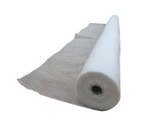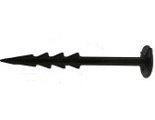
How to apply frost protection fleece
2 Minute Read
Our top tips for protecting your plants throughout the colder seasons.Frost protection fleece for plants
It's not just us gardeners that need to wrap up warm in the cold, our tender plants need the same protection from frost. In this guide, we'll talk you through our frost protection fleecing and the best ways to tuck your plants up and protect them from the cold.What is Horticultural Fleece?
Frost protection fleece or horticultural fleecing is a protective layer that can be applied to tender crops and plants. Fleece can be used to protect against cold, frost as well as other harmful weather conditions.Fleece has benefits over other products used for a similar purpose, it is easy to manipulate for tricky areas and lightweight making it easy to handle. It can be used with containers on patios and balconies, or even in greenhouses, if need be.
Fleecing is best used for tender plants that cannot be brought inside or if you do not have a greenhouse for winter storage.
How to protect plants with fleece?
Wrap or drape the fleecing over your tender plants for the best protection against cold weather. Fleecing will not eliminate any risk of pest and diseases, so always make sure to check on your plants regularly for signs of disease such as botrytis or downy mildew.Be sure to check all plants, (especially exotic plants) for moisture between the leaves, as this could cause rot and disease. A layer of bark or straw mulch is also a fantastic protector against frost as well as helping to suppress weeds.
For fruit and vegetable beds that require frost protection the fleecing should be laid over the ground - much like a blanket and secured in place with pegs so wind and further adverse weather doesn't lift the fleecing.
* Don't forget your tender plants in pots too, add a layer of much and group pots close together in an area sheltered from strong winds and excess rain. Apply fleeecing if theres a possibility of a sharp cold snap.
When should I remove fleecing?
Once the risk of frost has passed, the weather starts to turn and or when new growth starts you can remove the fleecing to allow the plant to adapt to the changing weather.* It's important to remove any coverings if the weather turns particularly mild to avoid sweating and damage to plants, replace coverings again if the weather turns frosty.
Fabric and Tools
Comments (2)
Leave A Comment
Most popular articles
1
Plastic plant pots dimensions and uses2
Peat vs Peat Free - Choosing the right Potting Compost3
How to Grow Watercress at home in plant pots4
January Jobs5
March Jobs



Reply